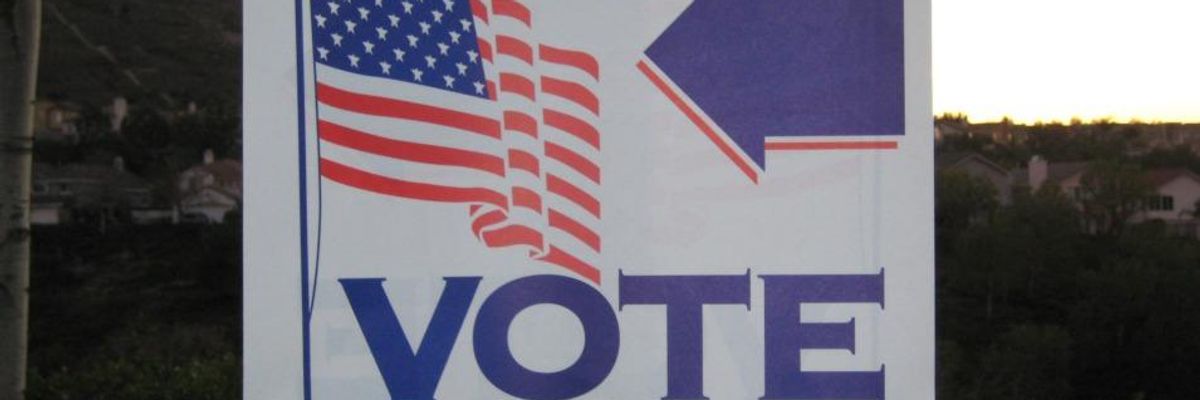Former U.S. President Donald Trump and GOP leaders continue to promote the insidious falsehood that noncitizen immigrants are voting. Democrats and pundits point to evidence in study after study showing noncitizens are not voting, except in exceedingly rare occasions.
Few talk about whether noncitizen immigrants should have voting rights. Although it may sound odd or outlandish at first blush, there are strong moral and practical reasons to consider the merits of immigrant voting rights:
First, it’s rational. Twenty-two million residents are noncitizens (about 1 in 14), both documented and unauthorized immigrants. They live in every state and virtually every town. They are teachers and students, physicians and nurses, musicians and construction workers. They raise families, send kids to schools, contribute billions in taxes, make countless social and cultural contributions, serve in the military, and even die defending this country. Despite Trump’s desire to deport them, immigrants make the operation of much of our economy and society possible. Yet they cannot vote on issues crucial to their daily lives.
Just as the civil rights movement extended the franchise to African-Americans who had been barred from voting, efforts to extend the franchise to new Americans similarly seek to advance their equitable representation and inclusion.
America’s experience of excluding African Americans, women, and young people points to the dangers of excluding groups from the political process. Discriminatory practices and public policy in housing, education, healthcare, welfare, and criminal justice are the inevitable by-products of political exclusion. As the age-old political maxim attests, if you are excluded from the vote, politicians can more easily ignore you.
Although highly heterogeneous, as a group immigrants rank at the bottom of the social order, scoring low on indicators of well-being, including income, education, housing, and health. One in four low-income children is the child of an immigrant, and one in four low-wage workers is foreign-born. Immigrant families are more likely to lack health insurance, have poor health, and be “food-insecure” than the native-born. Latinos, the largest group of immigrants, experience the worst conditions, and Mexicans, the largest group of Latinos, face the biggest obstacles. Social scientists have long established that immigrants’ lack of access to citizenship and patterns of low voter registration and participation are highly correlated with underrepresentation in government and biased public policy outcomes.
Just as the civil rights movement extended the franchise to African-Americans who had been barred from voting, efforts to extend the franchise to new Americans similarly seek to advance their equitable representation and inclusion.
Second, it’s as American as apple pie. Most people are surprised to learn that noncitizens legally voted in 40 states at some point in time between 1776 to 1926. Immigrants voted not just in local elections, but also in state and even federal elections, and noncitizens could run for office. “Alien suffrage,” as these laws were called, was seen not as a substitute for citizenship, but as a pathway to foster citizenship and immigrant integration. The notion that noncitizens should have the vote is older, was practiced longer, and is more consistent with democratic ideals than the idea that they should not. Curiously, this 150-year history has been largely eviscerated from American national memory. In fact, the U.S. Constitution still does not preclude noncitizen voting, and the courts—including the Supreme Court—have upheld voting by noncitizens.
During the 19th century, when immigrants comprised 10% to 30% of the population in many states, noncitizens voted in significant numbers, and factored into election outcomes on salient issues of the day, helping advance anti-slavery causes, pro-worker issues, and progressive policy. The abolition of alien suffrage in the early 1920s coincided with the enactment of literacy tests, poll taxes, felony disenfranchisement laws, and restrictive residency and voter registration requirements that disenfranchised millions of voters.
Third, it’s feasible. Immigrant voting rights are being restored. Today, noncitizens legally vote in 17 localities from coast to coast, and other jurisdictions are considering restoring immigrant voting rights.
The Civil Rights movement helped revive immigrant voting in New York City in 1968, followed by the Sanctuary movement in the 1980s in Maryland where 10 towns allow it, and more recently in three towns in Vermont during the 2020s (Montpelier, Winooski and Burlington); San Francisco (2016) and Oakland (2022), California; New York City (2021) and Washington D.C. (2022). Other jurisdictions have enacted local laws—or have considered restoring immigrant-voting rights—including five localities in Massachusetts, six in California, one in Maine and Ohio, and in state elections in Connecticut.
Some laws provide voting rights to all residents—both documented and undocumented immigrants (MD, SF, D.C.)—while other jurisdictions enfranchise only Legal Permanent Residents (LPRs) and those with work permits (NY, VT). In some jurisdictions, noncitizens have voted in significant numbers, electing diverse representative bodies and fostering improvements in schools and student outcomes.
Globally, at least 45 countries on nearly every continent have extended voting rights to noncitizens in local, regional, and even national elections during the past several decades. These laws seek to align democratic principles with democratic practice.
Immigrants are under attack today and need greater tools to defend themselves, so why not debate the merits of restoring immigrant voting rights? As Jamie Raskin, a Maryland congressman and law professor who wrote a seminal 1992 law review journal article about alien suffrage that spurred its revival, put it, “immigrant rights are the civil rights” of the day and “by that logic, noncitizen voting is the suffrage movement” of our time.
